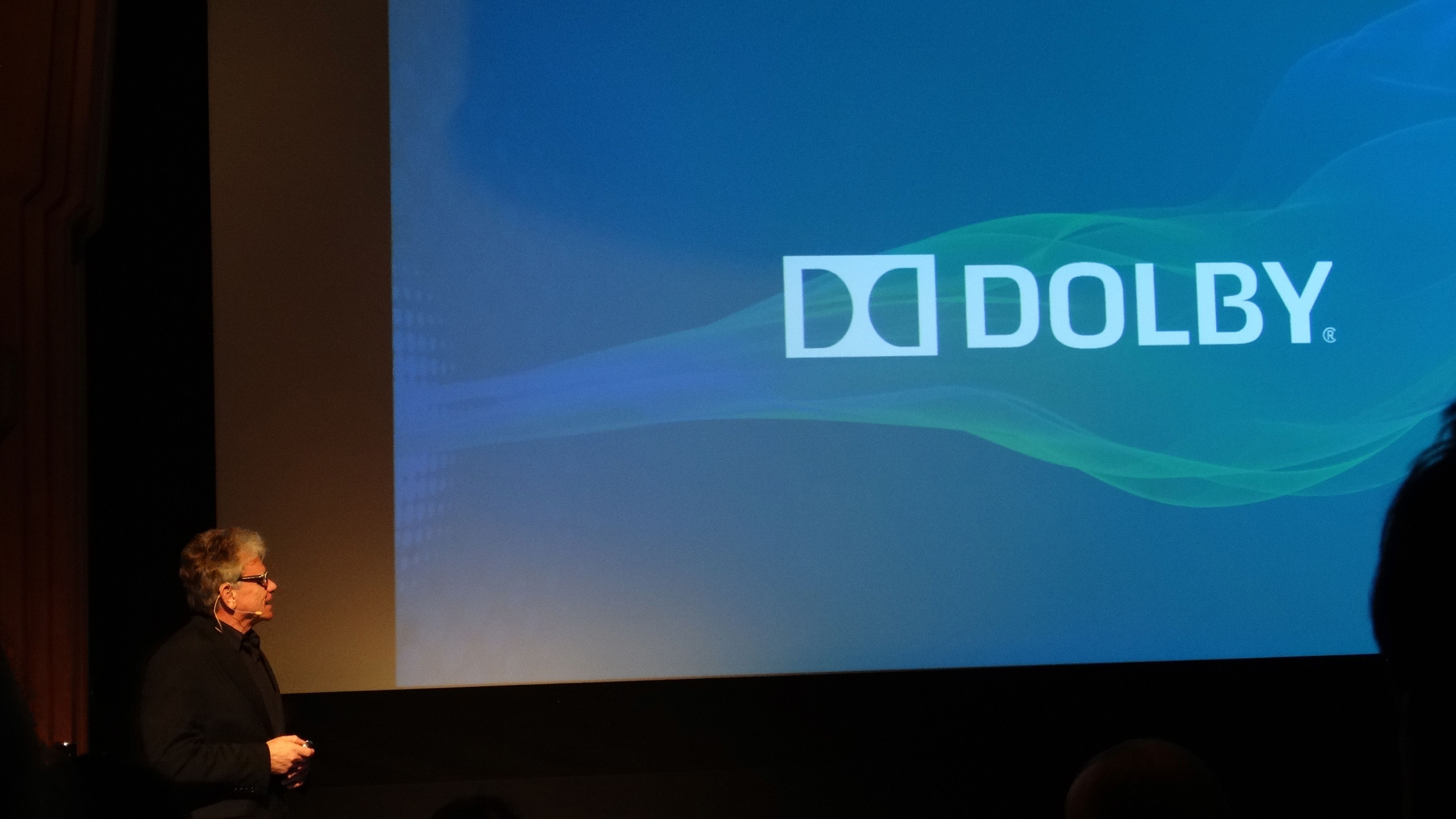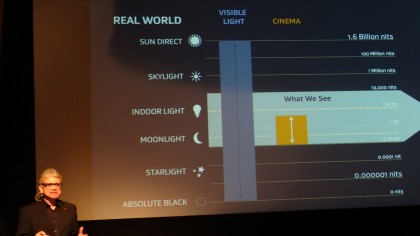Dolby demos innovative imaging tech, more glasses-free 3D
Dolby is 'nuts for nits'

Updated: A few clarifications have been added regarding what exactly Dolby is working on.
Dolby's new technology is not a TV - rather it is new imaging tech that enables pixels to transmit and display new levels of brightness, colors and contrast.
Original article ...
Think your high-def 4K, ultra-whatever TV screen is amazing? Dolby thinks it can be better.
Though Dolby is best known for exceptional sound technology like Dolby Atmos, the company hosted an "At the Labs" press event December 5 to show off its latest and greatest offerings on the screen side of things.
Currently in the conceptual phase, Dolby is attempting to create super TV technology - specifically, a TV screen that can display 4,000-nits (a nit being a measurement of brightness) compared to the standard 100-nits televisions usually display.
TechRadar was shown a prototype of the aforementioned 4,000-nit tech on an experimental screen nicknamed the "Dolby Pulsar" to the staff (though the tech is currently nameless) in a side-by-side comparison with a 100-nit screen. The results were indeed impressive.
Get daily insight, inspiration and deals in your inbox
Sign up for breaking news, reviews, opinion, top tech deals, and more.
Though both had the same resolution (1080p HD), the super display was noticeably better with brighter colors due to the higher dynamic range and contrast sensitivity - clouds were whiter, metallics shinier, the sun actually makes you squint, etc., all without looking cartooned and Instagrammed - rather, it's akin to peeping through a window into the real world.
It's all about the nits
The inclusion of 4,000 nits grants filmmakers in the post-production process the ability to use more realistic coloring.
Pat Griffis, Dolby's executive director of technology strategy, gave the example of recreating the bright red hue of a London bus; with only 100 nits to work with, the post-production team must make creative choices to evenly distribute the right amount of nits across the screen, meaning the red bus won't look as real in the rendering.

It seems like it might be a while before the more vibrant 4,000-nit set hits the shelves - the prototype currently requires four times the amount of LEDs for the backlighting in addition to a liquid cooling system.
However, the imaging tech can be distributed to various types of displays - 4K to HD - thereby actually improving the screen resolution because of the higher contrast sensitivity and dynamic range.
OEM prototypes of Dolby's imaging tech will pop up during CES 2014, where more details will emerge.
Don't forget about glasses-free 3D
Dolby and Philips have had a year-long partnership with the goal of creating better glasses-free 3D screens, and the joint venture seems to be paying off.
The concept of glasses-free 3D TV has been kicked about for awhile now with different TVs and prototypes making appearances here and there but there's been little fanfare on the market since many believe 3D to be a passing phase and generally dead in the water.
But the newest version of the companies' glasses-free 3D tech that was demoed during the event shows Dolby is still intent on releasing consumer versions of the 3D TVs.
There are definite improvements in viewership sweet spots - you can move about the room in front of the set and still see the 3D effects thanks to the Dolby's focus on depth enhancements, ensuring that the content won't be distorted on various screen sizes.
Dolby has stated that glasses-free 3D TV sets will go on market next year, right before the holiday season. Pricing is still up in the air, though a Dolby rep noted that the company's goal is to set the price point in the 4K TV-price range.
Five OEM TV screens will be on display during CES 2014 to get everyone excited, plus an undisclosed set of glasses-free 3D PC monitors as well.